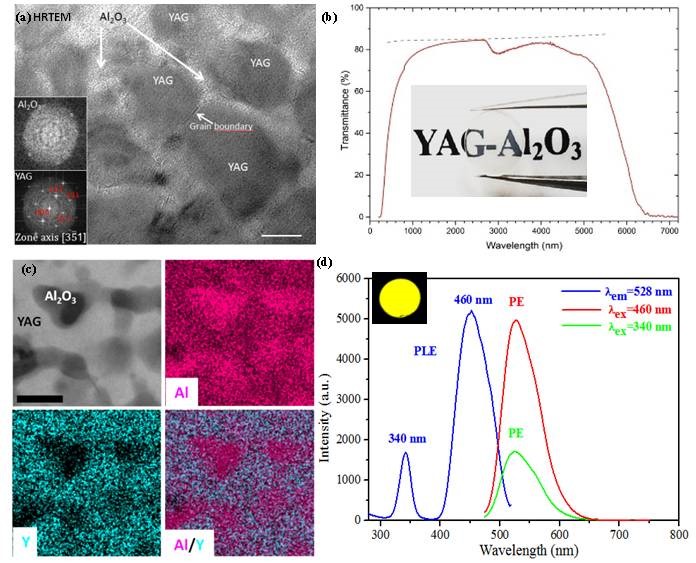Transparent crystalline yttrium aluminum garnet (YAG; Y3Al5O12) is particularly noteworthy due to its importance as a host material in solid state lasers, phosphors and scintillators. However, YAG single crystals and transparent ceramics face several technological limitations including complex, time-consuming and costly synthetic approaches. Pressureless fabrication of transparent YAG nanoceramics has never been reported up to date.
A research team led by Prof. LI Jianqiang from the Institute of Process Engineering (IPE) of the Chinese Academy of Sciences proposed the innovative idea of using solidification-amorphous crystallization method to prepare YAG transparent ceramics.
Firstly, aiming at the problem of poor amorphous forming ability of the YAG component, the containerless solidification technique was used to suppress the nucleation of the high undercooling state of the melt. By adjusting Al2O3/Y2O3 ratio to strengthen the amorphous formation ability, bulk glass precursor with uniform amorphous structure was successfully prepared. Further, in cooperation with the Prof. ALLIX Mathieu of the French National Science Center (CNRS), the crystallization behavior of the amorphous substrate under pressureless conditions was studied. Finally, a facile elaboration of transparent YAG-based ceramics was obtained by pressureless nano-crystallization of Y2O3-Al2O3 bulk glasses.
The resulting ceramics present a nanostructure composed of YAG nanocrystals separated by small Al2O3 crystalline domains. The hardness of these YAG-Al2O3 nano-ceramics is 10 % higher than that of YAG single crystals. When doped by Ce3+, the YAG-Al2O3 ceramics show a 87.5% quantum efficiency. The combination of these mechanical and optical properties, coupled with their simple, economical and innovative preparation method, could drive the development of technologically relevant materials with potential applications in wide optical fields such as scintillators, lenses, gem stones and phosphor converters in high-power white-light LED and laser diode.
Their work entitled “Pressureless Glass Crystallization of Transparent Yttrium Aluminum Garnet-based Nanoceramics” was published in Nature Communication.
https://www.nature.com/articles/s41467-018-03467-7
Professor LI Jianqiang and ALLIX Mathieu are co-corresponding authors. Dr. MA Xiaoguang and associate professor LI Xiaoyu are co-first authors. This work was ?nancially supported by the National Natural Science Foundation of China (Grant Nos. 51471158, 51674232, etc.), Natural Science Foundation of Beijing Municipality (No. 2152032) and Chinese Academy of Sciences President’s International Fellowship Initiative (Grant No. 2017VEA0010), and has applied for international patents. (PCT/CN2018/078307).

Figure 1 The microstructure, transmittance, and photoluminescence application YAG-based nano-transparent ceramics. (Image by LI Xiaoyu et al.)
Media Contact:
LI Xiangyu
International Cooperation Office, Institute of Process Engineering, Chinese Academy of Sciences, Beijing 100190, P. R. China.
E-mail: xiangyuli@ipe.ac.cn
Tel: 86-10-62551358
 Search
Search




 京公网安备110402500047号
京公网安备110402500047号